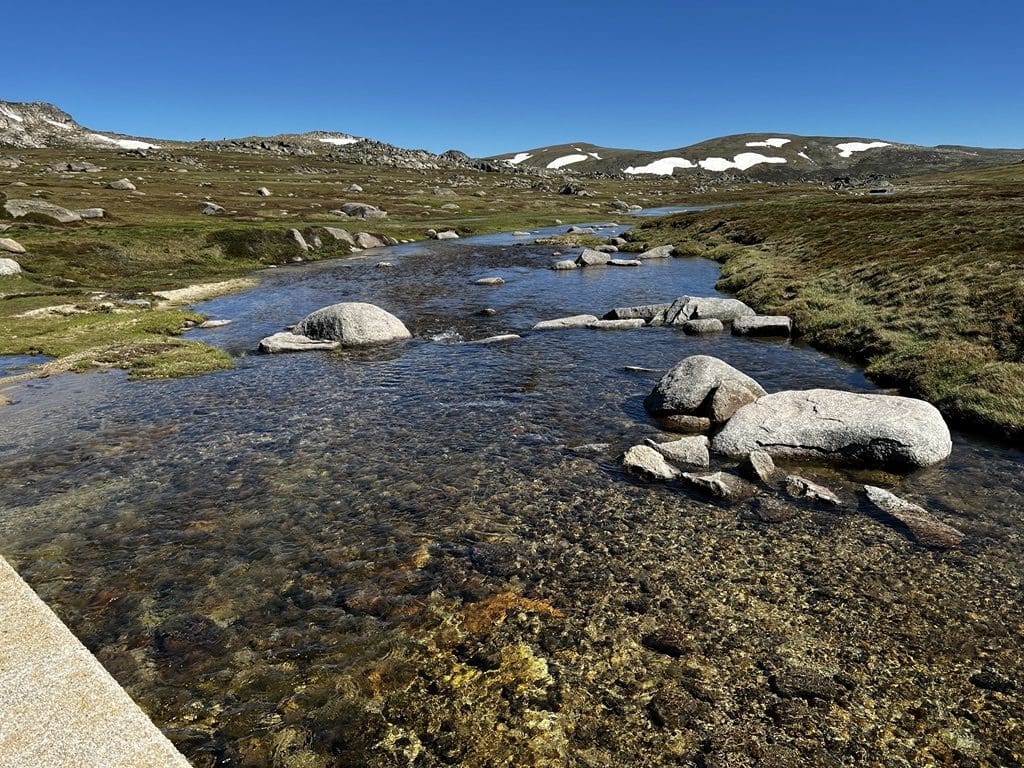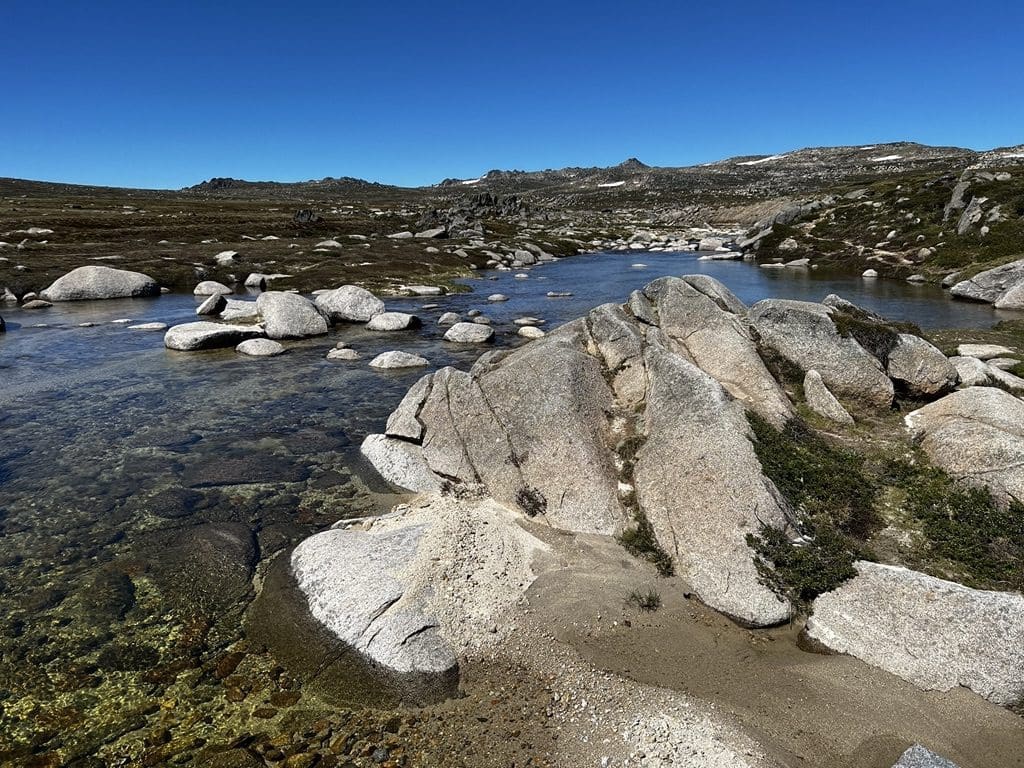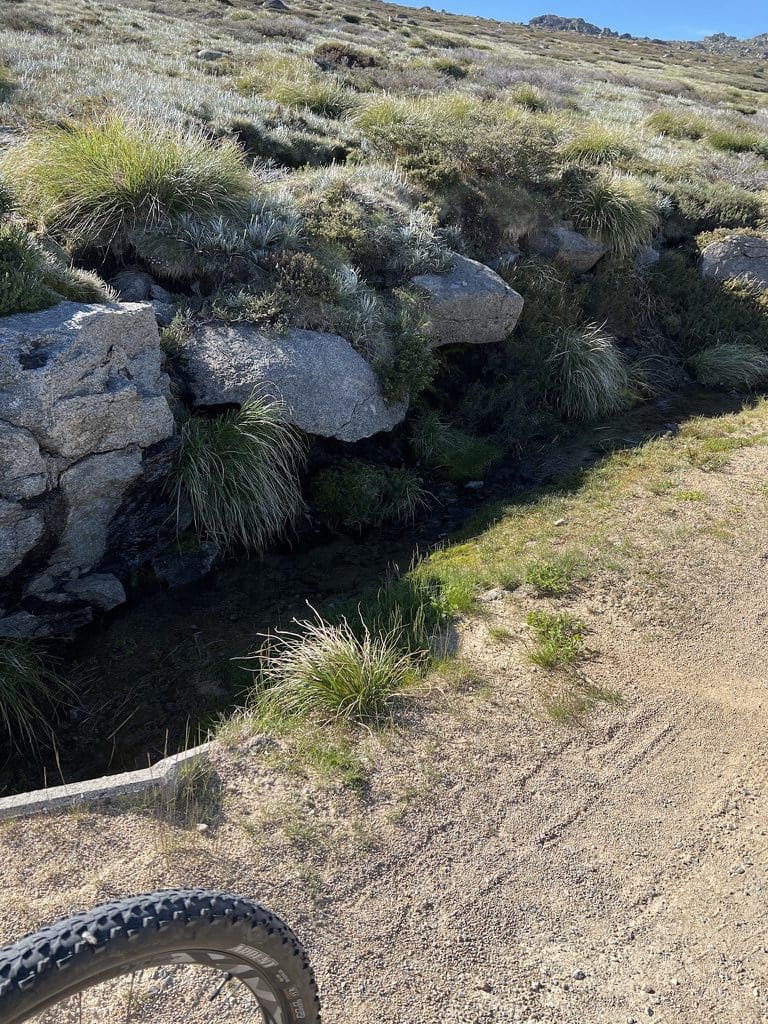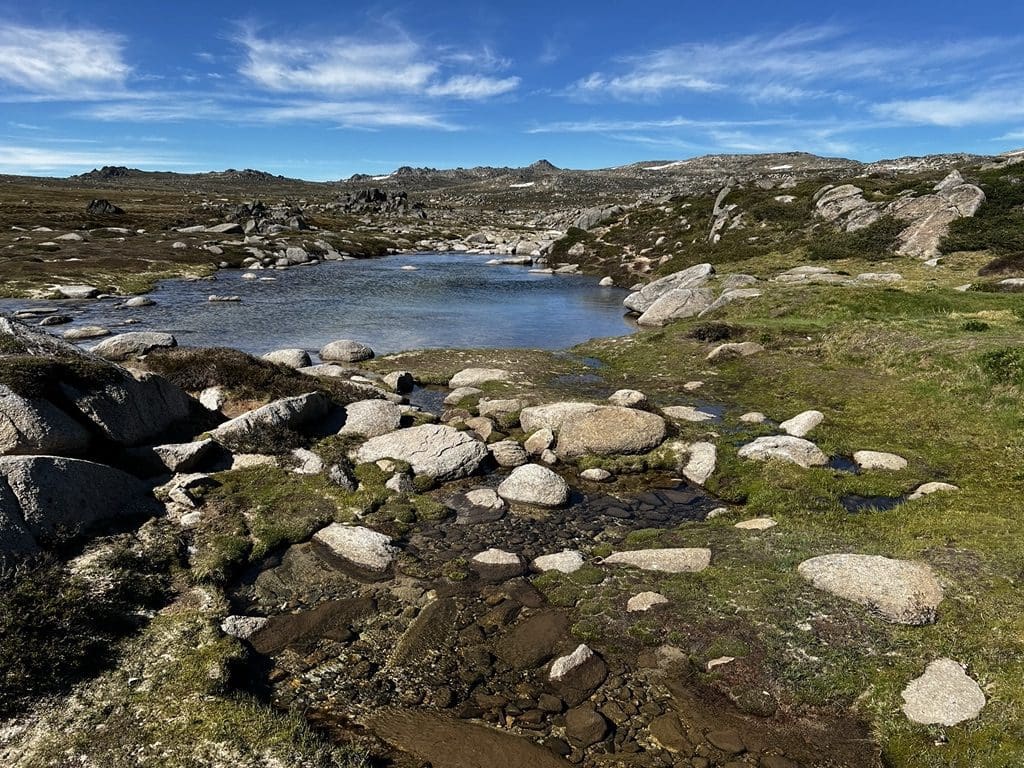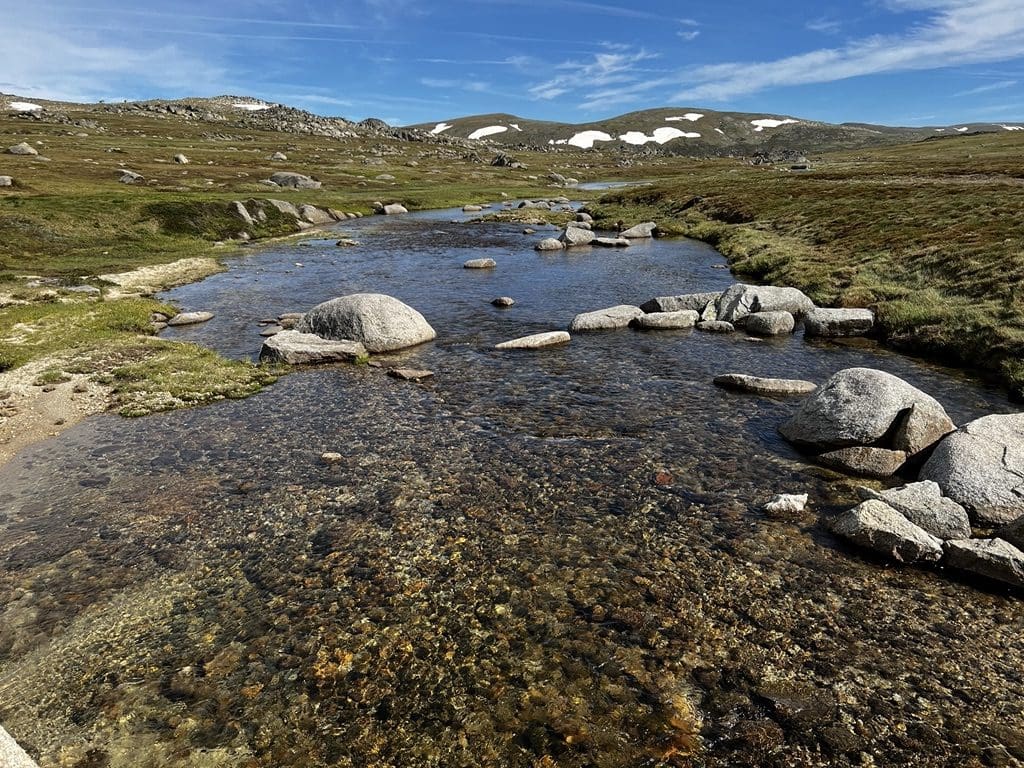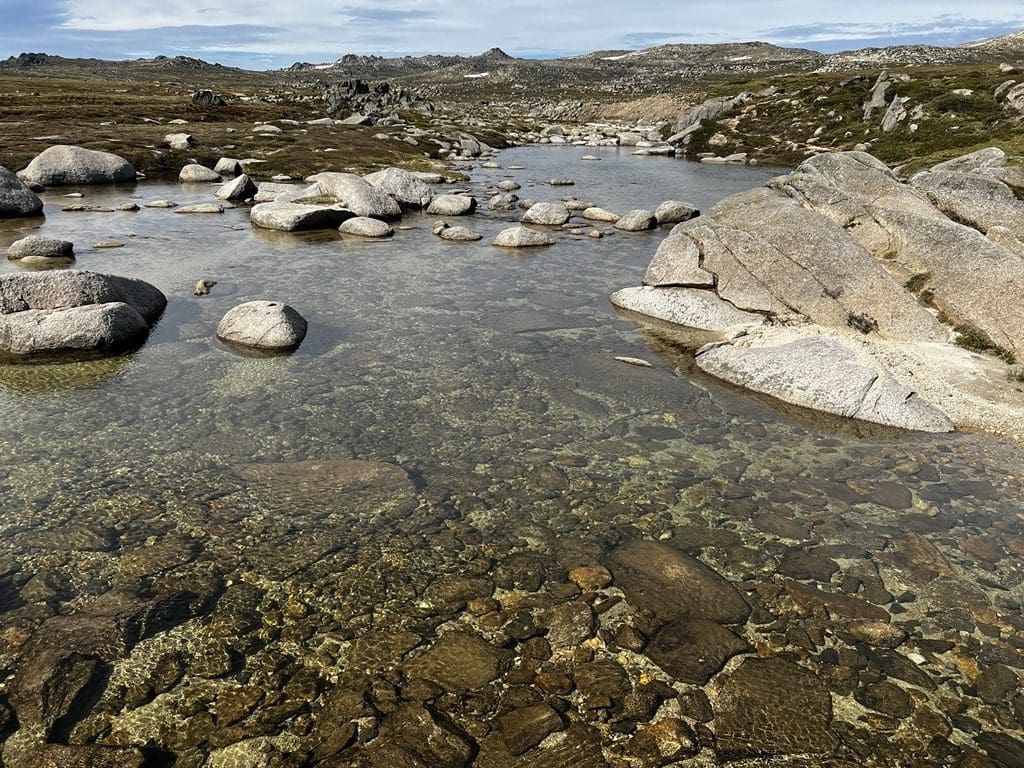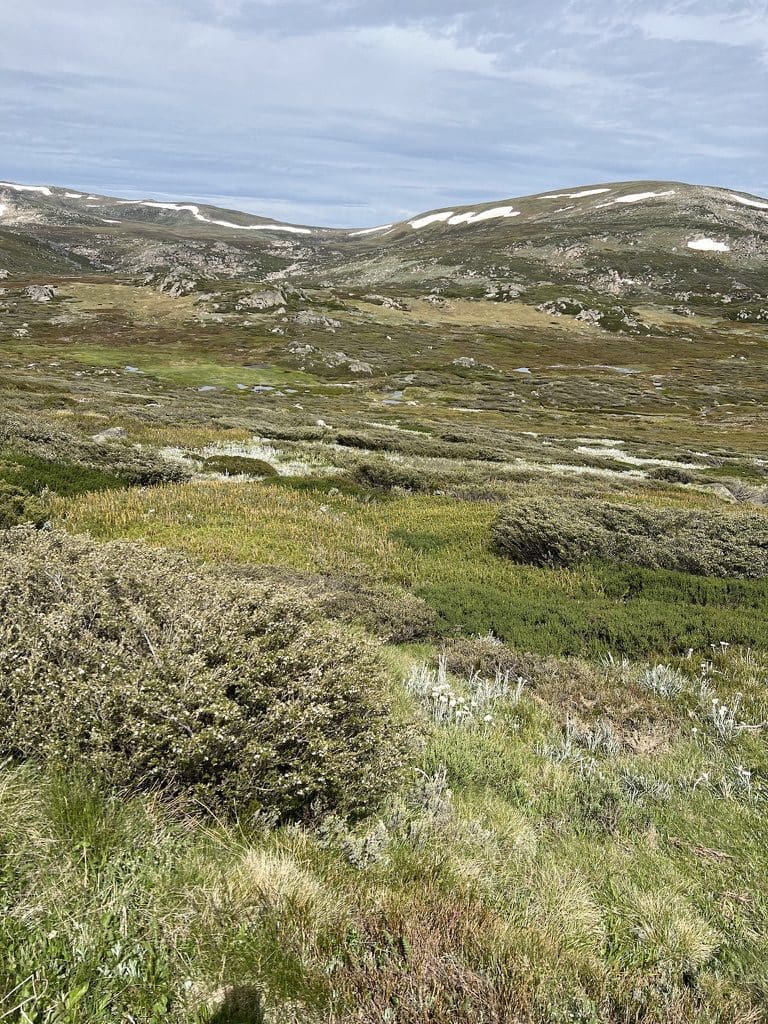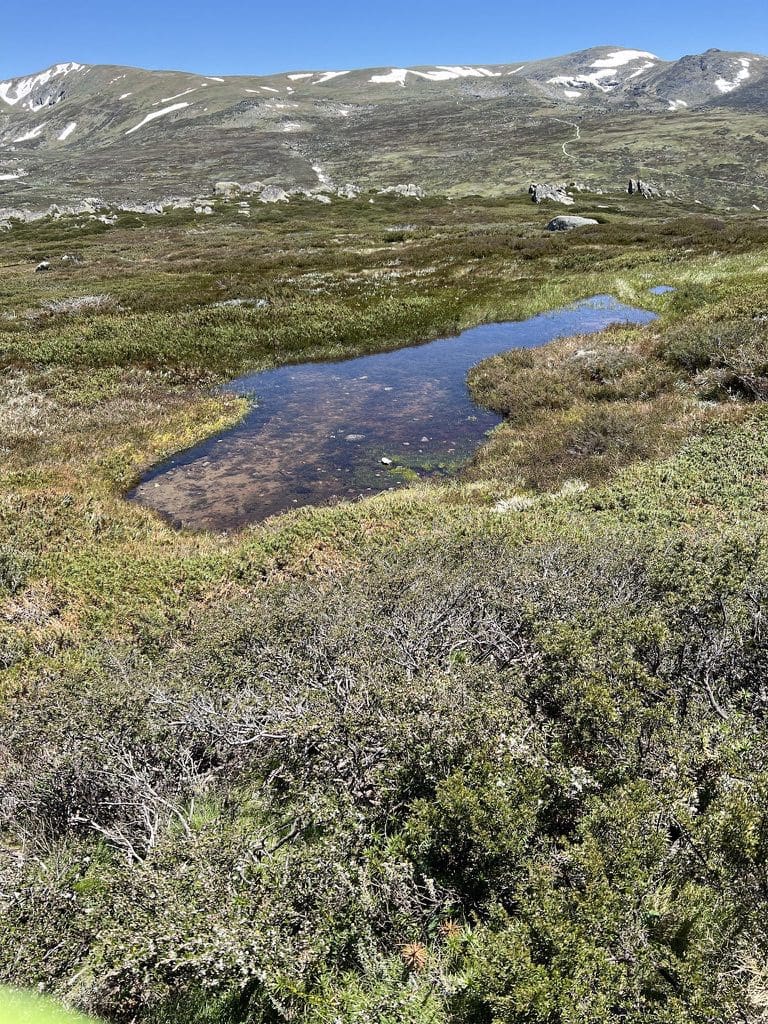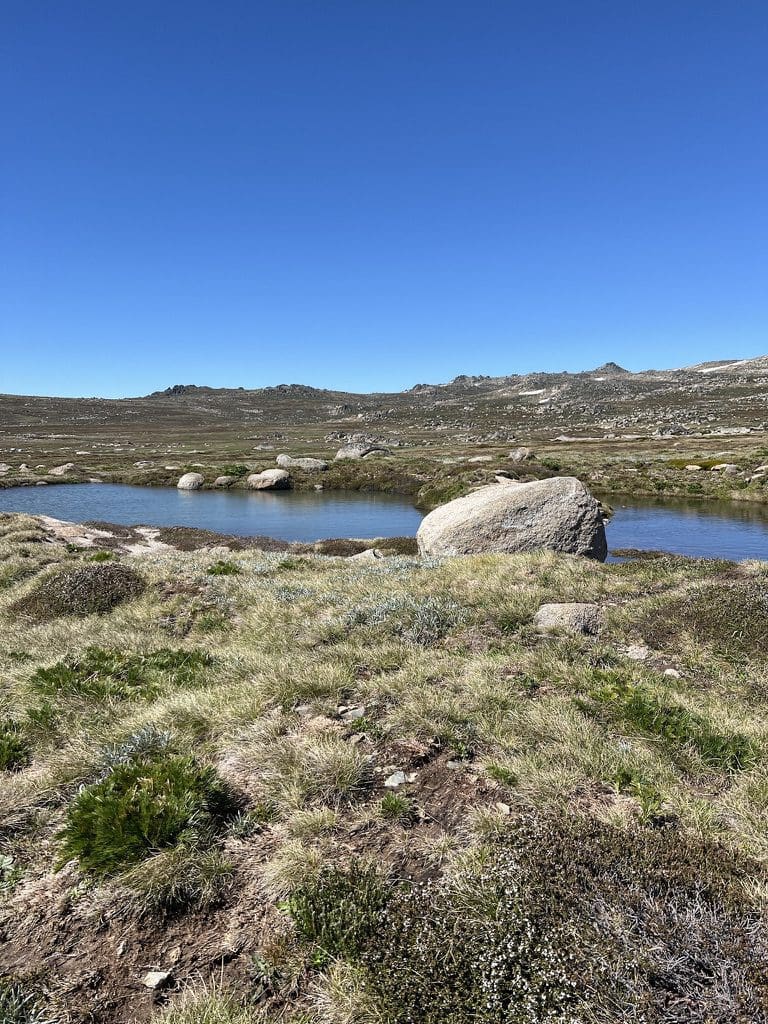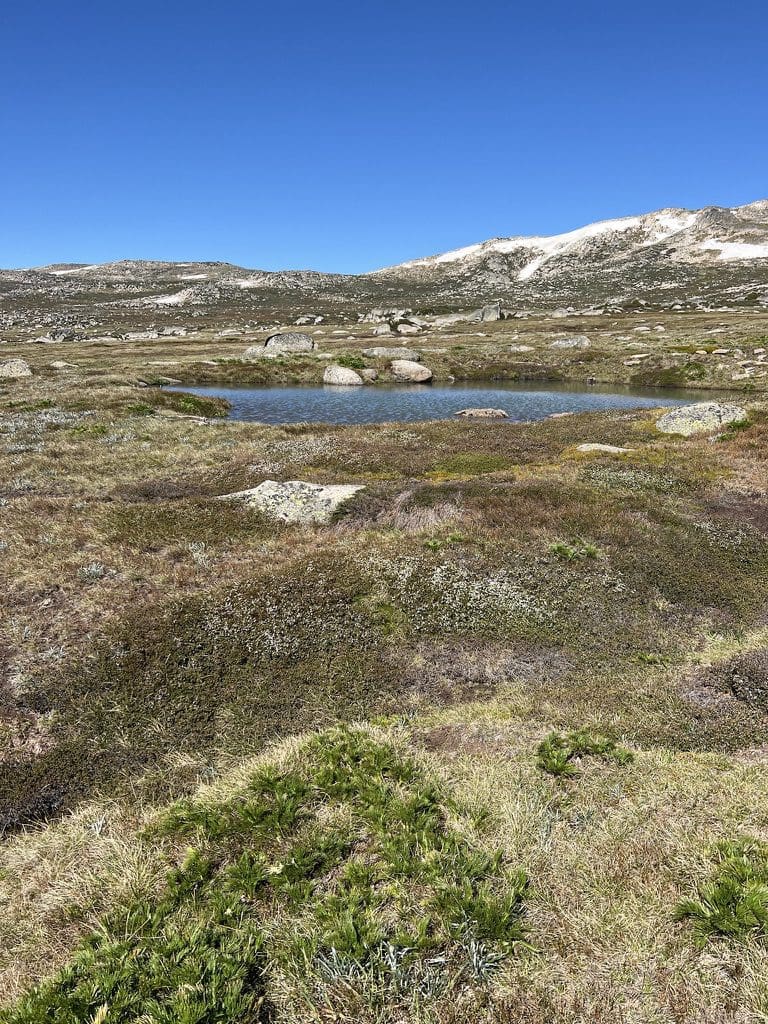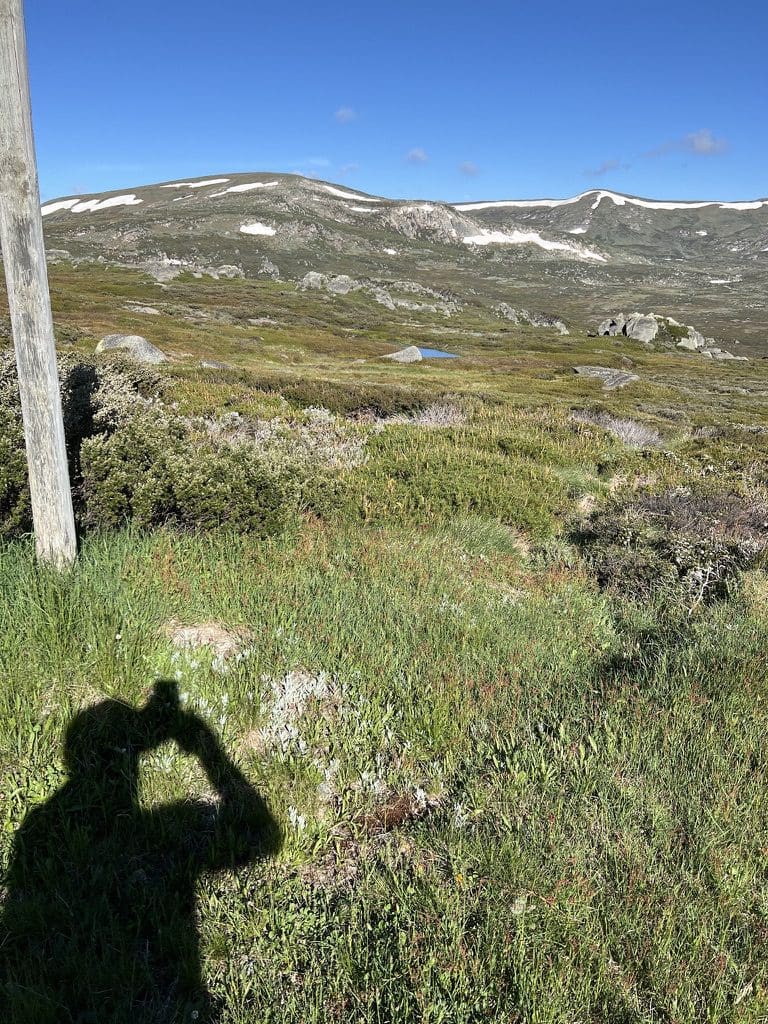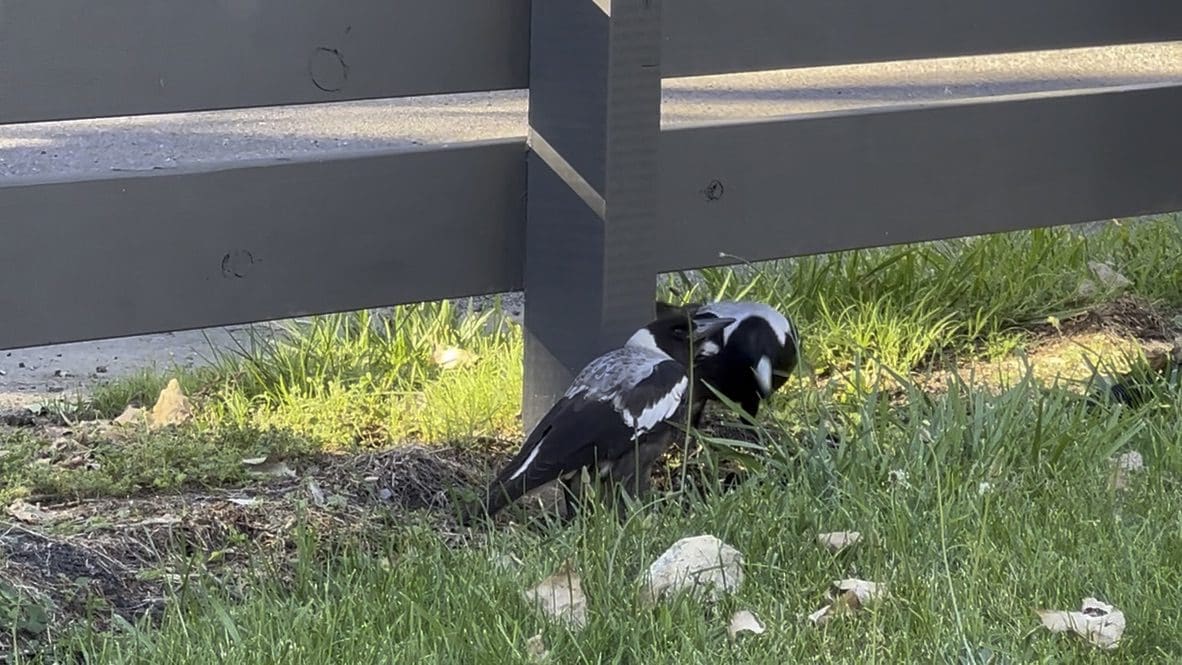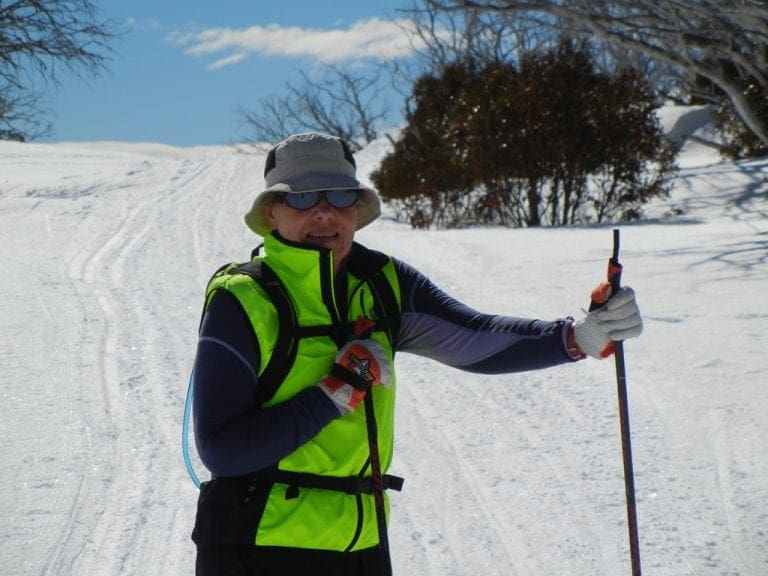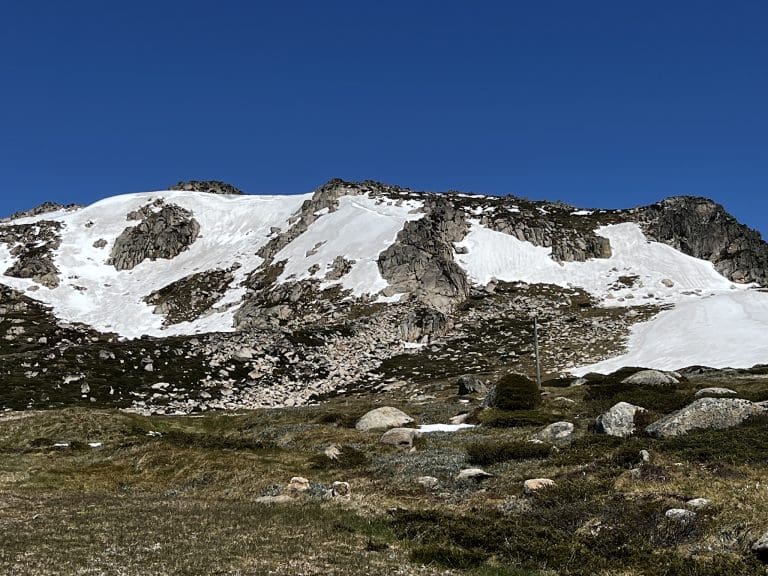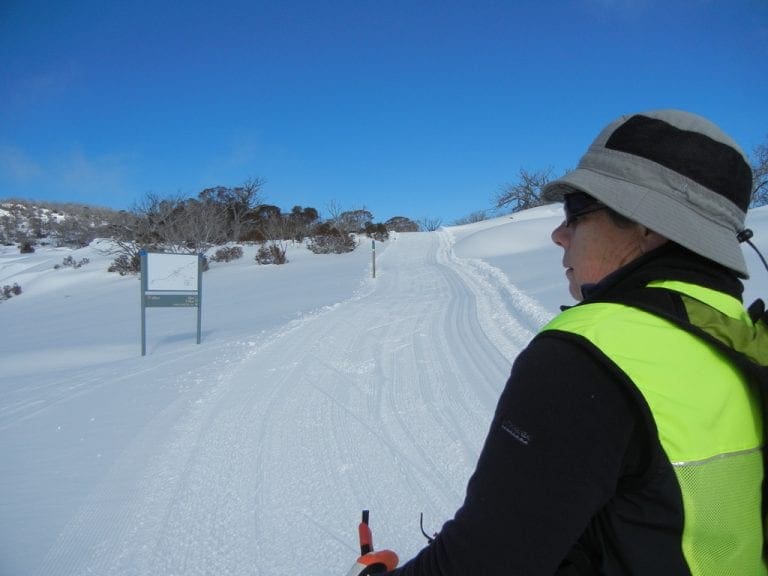December Cycling Trip to Jindabyne
We’ve come over to Jindabyne for a few days in late 2021. We will be in the A-van as the Cubby at Discovery Park no longer exists. We arrived on Saturday 18 December and will be here through to 29 December. The NRMA Park is quite good – very clean amenities and a short walk to Jindy shops (through a gate in the park fence). Lake Jindabyne is as full as we’ve seen it – the cycle track along the lake is covered, many new islands. The reason is that no more water can be put into the Murray (as it is already flooding) and downstream of the Snow is also flooding. Too much water.
Sun 19 Dec. It rained heavily all day. As the week progressed, we would find that the rain today and yesterday did a great deal of damage to the road – destroying all the roadwork put in over the last couple of years. We think that NSW National Parks had just filled in the previous damage with gravel and sand without working on why the road was destroyed. Of course, with a bit of heavy rain all that gravel and sand was just washed away again.
Mon 20 Dec. Very windy and a bit wet. We chose not to ride and walked instead. It turned out to be a difficult walk for us. We are so unfit. We walked just 8 km (4 up and 4 back). Very nice being out in the wind. We had a good look for frog burrows from about the 2km mark upwards – quite a few. Much damage done to the track in the recent storms. 8km
Tues 21 Dec. Windy from Charlottes up – mainly from about 800 metre up. We rode through to just about Snowy River – where wind and lack of fitness drove us back. We worked at keeping our heart rates out of the ‘orange zone’ so as not to exhaust ourselves too much. It is amazing that it can appear calm (no wind) all the way up from Jindy, Perisher and even Charlottes carpark – only to find 50km/hr wind 800 m up the track. 9.7km
Wed 22 Dec. Windy again. Not quite as strong. We rode up to Seamans Hut. We did not expect to get as far but managed to press on up the last 300m of steep and broken up road. Certainly very pleasant being out although I have a love hate relationship with wind. I delight in being out in it but don’t like having to push the bike against it. 11.8km
Thur 23 Dec. Windy again. Very strong against up up from Snowy River. We got only to the ‘flat spot’ just below the 500 m climb up to Seamans. We did a couple of up and down sections to make up distance. 15km
Fri 24 Dec – Xmas Eve. Still windy and unexpectedly so – forecast was 20 k/h, actual was 46k/h. We cycled up past Seamans, well just past Seamans. The road up from the flat spot to Seamans and just beyond is very cut up by recent rains and is difficult to ride – and even harder to come down. Most sections are difficult anyway and the cutup road makes them harder. The wind just made it harder still. I overdid the longest steep section and refused to get off. From then on, I was buggered and only made another 400m past Seamans before abandoning. On the very steep bit up to Seamans, three electric bikes went past us – one not even peddling at all. I’m not feeling too well at all. 12.4 km.
Sat 25 Dec – Xmas Day. Wind much lighter today. I bit wary after yesterday with its bad roads and wind. We think there is little point in going up to Seamans. We rode twice from Charlottes Car Park to Snowy River. A lot of people out today walking and riding to the top. We rode 18km.
